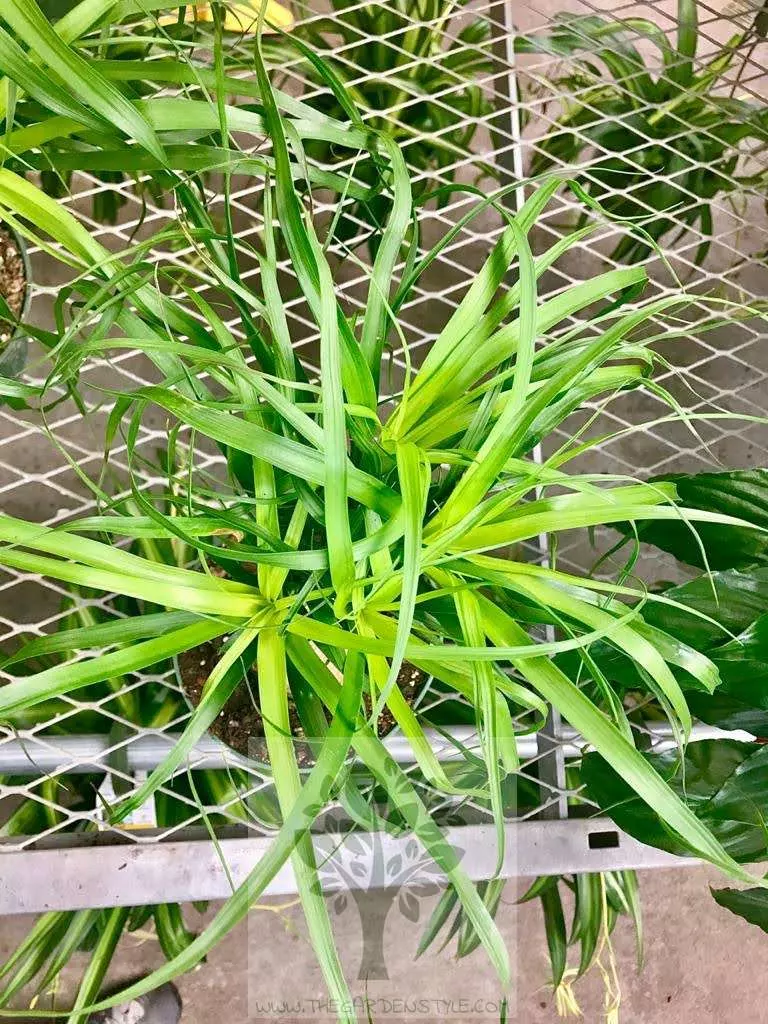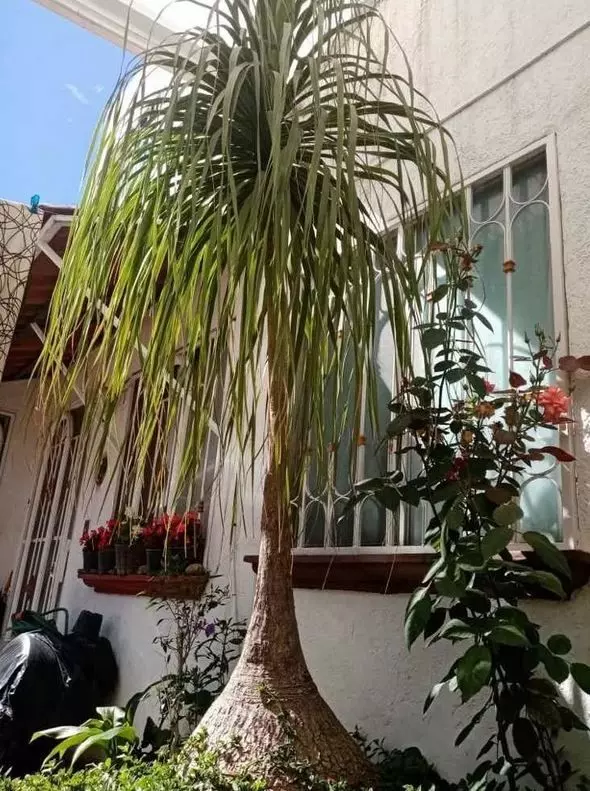It is one of the most unique ornamental houseplants and, precisely for this reason, enjoys a good number of fans among plant lovers. Striking and tropical in origin, the care of the ponytail palm or elephant’s foot (Beaucarnea recurvata) is not difficult if properly understood. It is an extremely long-lived plant that with proper care you can enjoy. Continue reading to learn how to care for a ponytail palm.
Due to its sculptural appearance, the ponytail palm is one of the most valued plants to add an elegant touch to any interior. Native to desert areas of Mexico and Guatemala, in the wild it can reach spectacular dimensions of up to 32 ft (10 m) in height. Although it is true that cultivated it will not have that size, ponytail palm can grow up to 5 to 6.5 ft (1.5 to 2 m).
Table of Contents
Ponytail Palm Watering
How Often To Water The Ponytail Palm
The ponytail palm is not a demanding plant when it comes to watering. Overwatering is the main reason the ponytail palms die or become diseased. Too much water will cause the stem and roots of the ponytail palm to rot.
This plant is a succulent and as well as all succulents needs little watering. One watering every three weeks will be enough to keep the ponytail palm in good condition. During the winter, watering should be reduced even more. In nature, these plants go up to 6 months without rain.
Finally, it is advisable to create a humid environment around the ponytail palm to hydrate the leaf canopy. You can use a humidifier or spray the leaves with a little water, especially in the summer.

How to Fertilize the Ponytail Palm Plant
The ponytail palm is not a very demanding plant when it comes to fertilization. However, applying fertilizer once a year would be ideal to provide the nutrients this plant needs. To fertilize a ponytail palm, a 1-2-2 NPK fertilizer or similar is ideal. Remember that it is not a palm tree and will use a fertilizer similar to that used by cacti and succulents.
Using a fertilizer with more NPK values (nitrogen, phosphorus, and potassium) will cause an excess of fertilizer in the ponytail palm and this is detrimental to the plant. Too much fertilizer is never good for any plant. For example, an excess of fertilizer could cause foliar burns.
- ORGANIC PLANT FOOD: This liquid fertilizer for Cactus, Succulents and tropical plants provides organic nutrients to ensure superior results and is safe to use around kids and pets.
- EASY: Simply add ½ cap of Cactus! plant food liquid per quart of water and water your plants. Thoroughly drench the soil of the plant. For best results use every 2-4 weeks.
- CONTAINS: Essential plant nutrients to help plants thrive. Liquid plant food is a vital part of indoor plant care, for plants both large & small. See label for all ingredients.
What is the Best Temperature for the Ponytail Palm Plant?
The ponytail palm plant likes heat and light. It does not resist the cold. In winter, if it is frosty weather, put the ponytail palm at home, in a room with little heating and good light. It can withstand heating well if it is sprayed.
In summer the ponytail palm should be sprayed with water so that it has humidity, otherwise, the tips of its leaves dry out. Ponytail palm has to spend the winter in a cool place minimum of 41 °F (5ºC) and with little watering.
Temperature: The ponytail palm should be in environments above 50 °F (10 °C), as it does not tolerate cold well.
Light: The ponytail palm appreciates exposure to sunlight, but it does not like direct sun for many hours at a time. Thus, it also tolerates in places where it does not have direct contact with the sun or if it is in semi-shade in very hot places.
Soil for Ponytail Palm
The soil for the ponytail palm plant should be light and well-drained to avoid waterlogging.
The best choice is commercial soil for succulent and cacti plants. The young specimens need nutritious soil and more frequent watering in summer, but not the adults that already have a woody stem.
It is advisable a change of pot when the plant is acquired; later they should not be frequent. A small container because curiously the development of the plant seems to be better if the roots are crowded.

Ponytail Palm Pruning
Due to its characteristics, the ponytail palm does not need any pruning with one exception. As the ponytail palm grows and the leaves complete their vegetative cycle, the lower leaves turn yellow. Removing them, pulling them gently downwards, is essential so that the plant does not concentrate its energy on them.
How to Propagate the Ponytail Palm
An older ponytail palm sometimes forms cuttings in the leaf axils. These cuttings are excellent for propagation.
Steps to follow to propagate ponytail palm:
- Cut the cuttings, preferably in summer, so that there is some wood left on them.
- You can shorten the existing leaves to about 2″ (5 cm) in length; this reduces evaporation.
- Place the woody end of the cutting in a substrate ideal for growing.
- With even heat and humidity, the first tender roots will form after some time.
Pests and Diseases of Ponytail Palm
Pests and diseases can appear in the ponytail palm at any time. Therefore, it is important you know to care for the ponytail palm and the remedies for each situation, diseases in the ponytail palm could cause by fungi, aphids, mealybugs, or other problems.
Focusing on diseases that usually appear in this plant, we can indicate that the appearance of fungi in the ponytail palm usually corresponds to an excess of watering that causes rotting of the roots, which gradually spreads to the rest of the plant and is usually caused by the fungus Phytophthora.
To remedy this problem, use a specific fungicide for plants by applying it to the roots. In this way, you will prevent the fungus from growing and eliminate it. In addition, you should stop watering to prevent root rot from progressing. For more information, I recommend you to read our article about ponytail palm brown tips.
Final Conclusions
The ponytail palm is a very beautiful succulent and its main care should be never to overdo it with watering. Remember that it does not belong to the palm family, it belongs to the succulents, so it does not require much watering.
I hope this article about how to care for the ponytail palm will be of great help, and that you will be able to give the necessary care to your ponytail palm. If you have any extra questions about the ponytail palm care, do not hesitate to contact us through the contact form.


